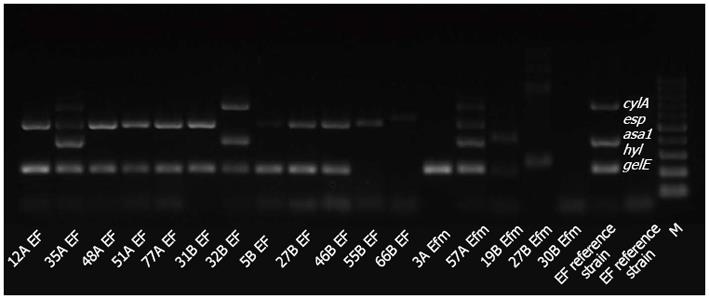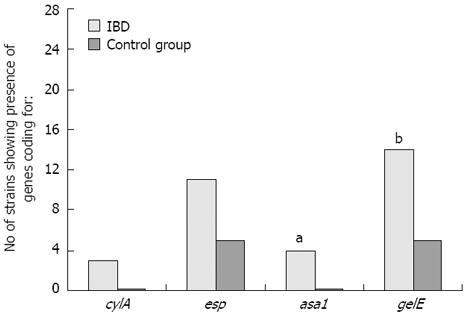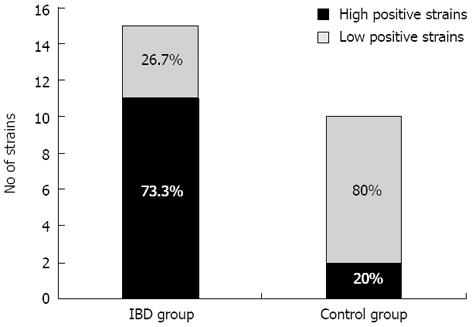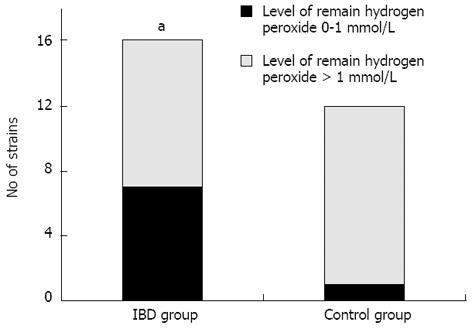Copyright
©2013 Baishideng Publishing Group Co.
World J Gastroenterol. Jun 21, 2013; 19(23): 3562-3572
Published online Jun 21, 2013. doi: 10.3748/wjg.v19.i23.3562
Published online Jun 21, 2013. doi: 10.3748/wjg.v19.i23.3562
Figure 1 Agarose gel electrophoresis of multiplex polymerase chain reaction amplification products from Enterococcus species isolates.
The reference strain Enterococcus faecalis (E. faecalis) ATTC29212 (EF reference strain) possessing the genes cylA, asa1 and gelE constituted the positive control. The negative control was a reference strain of Enterococcus faecium (E. faecium) ATTC 35667 Efm reference strain that did not possess any of the examined genes. Product sizes were as follows, asa1: 375 bp; gelE: 213 bp; cylA: 688 bp; esp: 510 bp; hyl: 276 bp. EF: Tested strains of E. faecalis; Efm: Tested strains of E. faecium; M: Mass marker 100-1000 bp.
Figure 2 Presence of virulence factors in Enterococcus strains.
Significant differences in the occurrence of the asa1 gene (aP = 0.0258 vs control group) and the gelE gene (bP = 0.0091 vs control group) were detected between strains isolated from children with inflammatory bowel disease (IBD) and strains from the participants in the control group.
Figure 3 Comparison of the ability of the tested Enterococcus strains to form biofilms.
The biofilm-forming abilities were assessed after 48 h, and all tested strains were classified as either abundant biofilm producers (high positive strains) or weakly adherent isolates (low positive strains). IBD: Inflammatory bowel disease.
Figure 4 Decomposition of hydrogen peroxide by the tested strains.
Statistically significant differences (aP = 0.04 vs control group) in the decomposition of H2O2 (to a level higher than 1 mmol/L) were detected between strains isolated from patients with inflammatory bowel disease and from participants in the control group.
-
Citation: Golińska E, Tomusiak A, Gosiewski T, Więcek G, Machul A, Mikołajczyk D, Bulanda M, Heczko PB, Strus M. Virulence factors of
Enterococcus strains isolated from patients with inflammatory bowel disease. World J Gastroenterol 2013; 19(23): 3562-3572 - URL: https://www.wjgnet.com/1007-9327/full/v19/i23/3562.htm
- DOI: https://dx.doi.org/10.3748/wjg.v19.i23.3562












